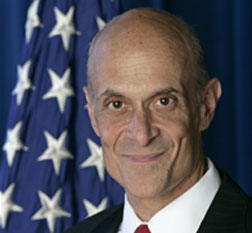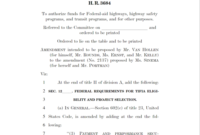 U.S. Dept. of Homeland Security Chertoff calls E-Verify a tool for contractors. |
President Bush on June 6 issued an executive order that directs contractors to use the electronic "E-Verify" system, to show that new hires and all employees working on federal contracts, including people hired as far back as 1986, are legal.
Dept. of Homeland Security Secretary Michael Chertoff said that E-Verify and federal agencies will "give these contractors the tools they need to make sure that workers who were hired to work on federal contracts are legal workers."
|
On the heels of that executive order, the administration has issued proposed implementing regulations, published in the Federal Register on June 12, that flesh out the details of its plan. The proposed rule says that the E-Verify requirement would apply to federal prime contracts valued at more than $3,000, and also to subcontracts in the construction or services sectors exceeding $3,000.
E.Colette Nelson, American Subcontractors Association executive vice president, says, "The inclusion of subcontractors, particularly at the $3,000 amount is gratuitous." She says that the executive order itself doesn't require such a threshold, nor is it comparable to levels under any other contracting program.
The proposed regulation also specifies that the requirements would cover solicitations issued and contracts awarded after the effective date of a final rule. That date isn't known yet. The deadline for comments on the proposal is Aug. 11, and agencies typically take weeks, or sometimes months, to review public comments on important regulations. But Chertoff said that federal officials are looking forward to having the new program "up and running later this year."
As with other changes to the Federal Acquisition Regulation, the employee verification proposal was issued by the Dept. of Defense, General Services Administration and National Aeronautics and Space Administration, but it would apply to all federal contracting agencies.
Among other requirements, the proposal says companies would have to verify the status of employees hired since Nov. 6, 1986. A federal contractor or construction subcontractor would have to enroll in the E-Verify system within 30 days of the contract award.
Contracts for federal contracts carried out overseas, including embassy projects and DOD work, would be exempt from the verification mandate.
The proposal estimates that the estimated cost of complying with its requirements at $550.3 million over the 10-year period, 2009 through 2018. Of that total, employers would bear by far the largest share, $538.4 million. That includes $104.8 million in 2009. Startup and training expenses are the main cost component, estimated at $308.3 million over the 10 years.
ASA's Nelson says, "We really do think that they underestimate the impact on employers, particularly with how error-prone the [E-Verify] system is."
But Chertoff says that E-Verify "has been a tremendous success," with an average of about 1,000 companies joining the program each week.
Nelson also notes that Congress authorized E-Verify as a pilot program that is scheduled to expire in November. She says ASA doesn't believe E-Verify will achieve the administration's goals in the most efficient and effective way. She says ASA would have preferred "real congressional oversight of E-Verify rather than...a decision that E-Verify is going to exist in perpetuity, by the executive branch."
ollowing up on a presidential directive, the Bush administration has proposed regulations spelling out a broad mandate for federal contractors, including those in construction, to use an electronic system to prove that their workers are legally authorized to work in the U.S.
 Related Links:
Related Links: 

Post a comment to this article
Report Abusive Comment